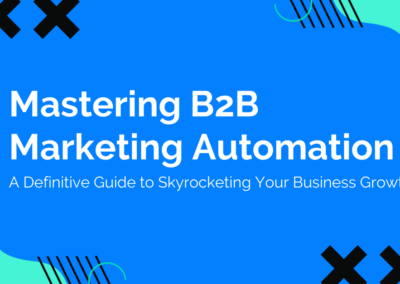The beginning of the year always begins on an ambitious note. However, as the months and quarters go by, some of that ambition begins to wane. That’s not to say you don’t still have the same goals you started with in January, but the realities of running a business manifest and it becomes harder to keep those ambitious resolutions.
Maybe these goals sound familiar: create brand awareness and generate more quality leads, or in other words, achieve demand generation and lead generation. These goals require very different strategies, but you can kill two birds with one stone using one powerful weapon—inbound marketing.
Inbound marketing is your secret weapon for B2B demand generation and lead generation. It consists of the tools you need to arm sales and marketing with to achieve both goals.
What’s the difference between DemandGen and LeadGen? And what inbound marketing tools will work for both?
B2B demand generation is often confused with lead generation. The two certainly go hand-in-hand, but each has different goals.
Demand generation focuses on generating buzz about your company’s products or services. The goal of demand generation is to bring awareness to your company through activities that promote long term nurturing throughout the conversion and sales cycles.
Lead generation works to capture prospect information through forms that are tied to individual pieces of content. The goal of lead generation is to build as many leads as possible in your database and then target them again to create demand for your product or service.
Both demand generation and lead generation are strategies executed through inbound marketing tactics. However, the execution of these tactics for each strategy is different.
If you’re still a little confused about how each of these work (we don’t blame you) and how your sales and marketing teams can make them happen, let’s take a look at what each strategy looks like in execution.
Demand generation
A campaign that focuses on demand generation can look very much like a campaign to generate leads. Both use inbound marketing tactics like content creation to attract leads. For example, an eBook or an explainer video can be used for both demand generation and lead generation. But the manner in which they execute these tactics is different.
An eBook created with the goal of demand generation will be made readily available to your audience. There aren’t forms that require prospects to fill out their information in order to get the information. Therefore, there is no lead generation associated with it. Remember, the goal of demand generation is to, put simply, create demand for your business. You want to attract prospects that find your solutions useful and remarkable. You do this by giving them the information that they want, no questions asked.
So, how do demand generation efforts produce leads? Leads are generated from a demand gen campaign through fields that are not required, but which the prospect willingly submits their information. For example, a “Contact Us” or “Learn More” form, or a field to sign up for blog updates. Prospects that fill out these types of form fields are quality leads. They came to you for information, found what they were looking for, found it rewarding, and they want to hear more from you. You’ve created demand for your brand.
Sales reps are reading this and thinking, “If you don’t make them submit their information, how am I supposed to target them and move them through the sales process?” It’s a valid question. But to that we say, keep in mind that the goal of demand generation is not a short term one. It is a long term process of nurturing leads to becoming customers. It is the ultimate inbound marketing strategy. Reward your prospects with valuable insights and information and you will be rewarded with customers that want to do business with you. In other words, put in the effort today to reap the benefits tomorrow.
Lead generation
Where demand generation is a long term process, lead generation works much more quickly. LeadGen uses the same inbound marketing tactics—offering eBooks, blogs, white papers, etc.—but it requires prospects to trade their contact information for the content. Form fields are required on materials that aim to capture leads. Unlike demand generation, which nurtures prospects over time, LeadGen captures prospects at different stages of the buyer’s journey based on the content they download or view.
For example, prospects that download an eBook about a case study on a recent project your business worked on (a bottom-funnel offer) are considered sales-ready leads based on the type of content they were interested in. Sales and marketing work very closely during the LeadGen process, because it easier to diagnose where a prospect is in the buyer’s journey based on the content they view.
Both strategies are targeted, and both generate leads. Your business should employ both by offering remarkable content that is targeted for various stages of the buyer’s journey and is either geared for DemandGen or LeadGen. A campaign should focus on one or the other. The idea is that if you nurture your prospects, long term or short term, they will eventually turn into customers.
Learn more about generating leads by downloading the eBook, “30 LeadGen Tips”.
{{cta(‘b7ba4828-116b-4942-8ddb-b406b801b33a’)}}



